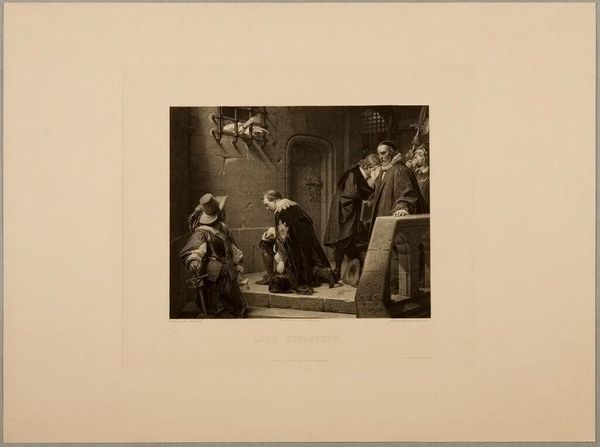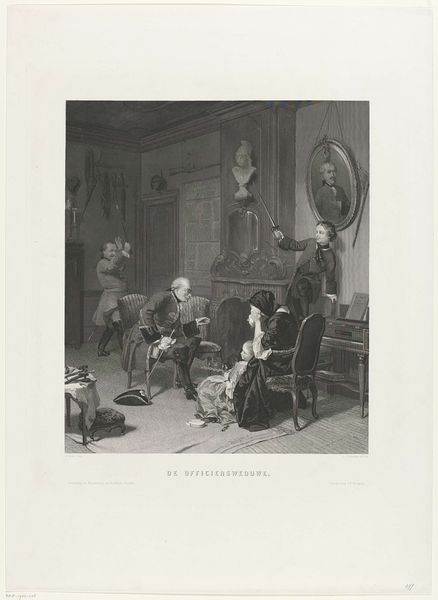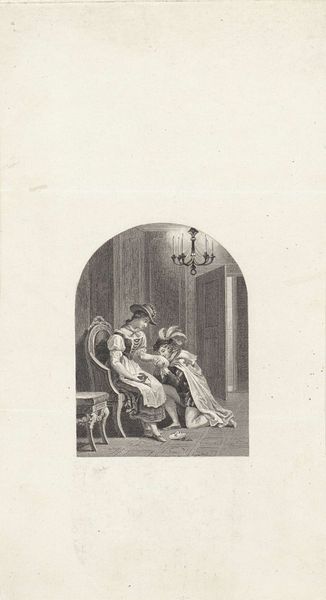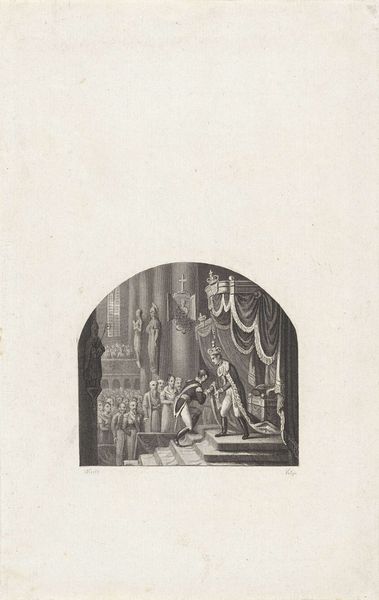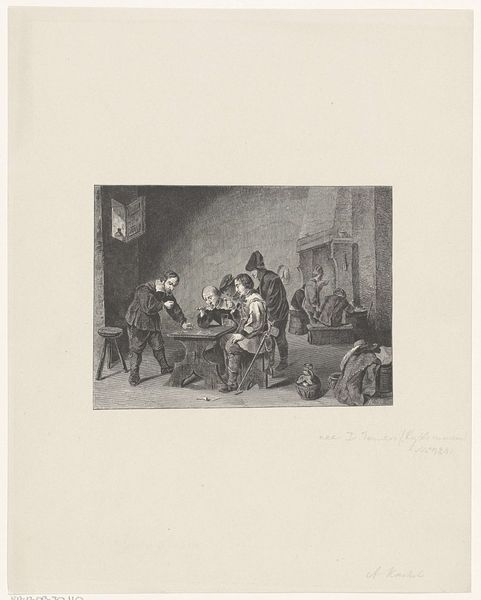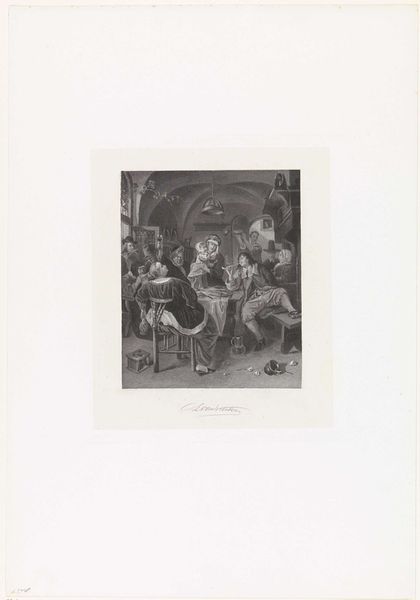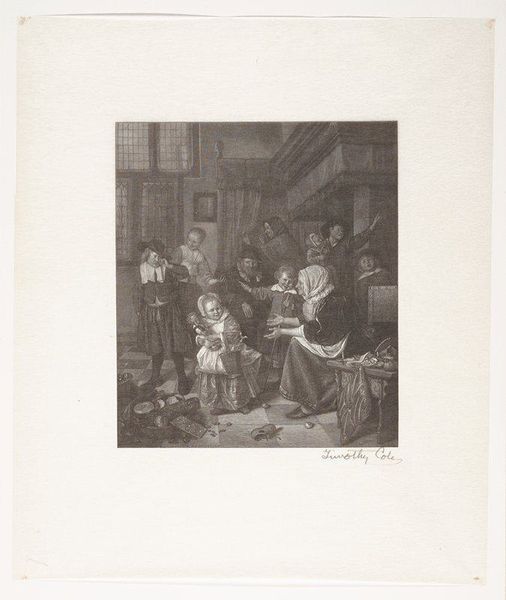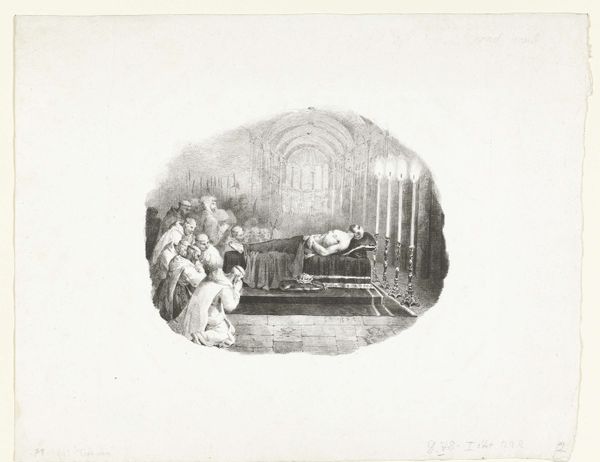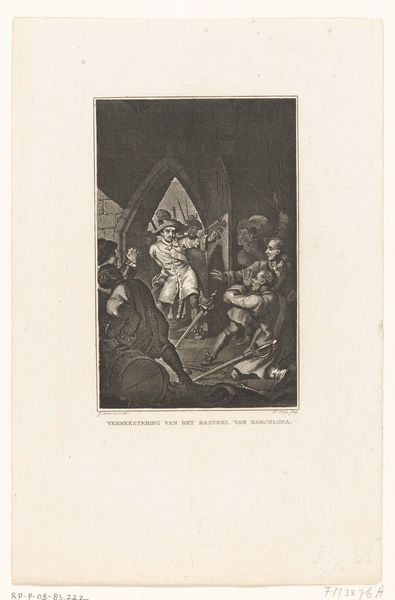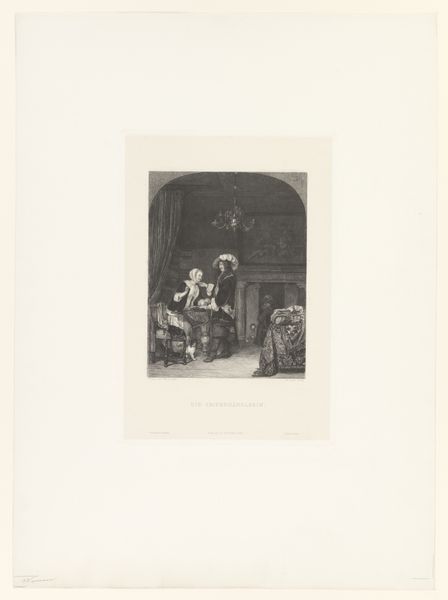
print, engraving
#
medieval
#
narrative-art
#
dutch-golden-age
# print
#
genre-painting
#
history-painting
#
engraving
Dimensions: height 277 mm, width 190 mm
Copyright: Rijks Museum: Open Domain
Curator: Here we have Frans Molenaar’s “Beeldenstorm te Amsterdam, 1566,” an engraving rendered between 1854 and 1856. Editor: The immediate feeling is one of violated order. Despite the static nature of print, I can feel the violent upheaval. What's fascinating is how it captures the very moment a dam seems to break. Curator: Yes, observe the deliberate composition: Molenaar directs our gaze from left to right, capturing the surge of figures—note their gesticulations, all unified in purpose as they enact iconoclasm within what appears to be a grand cathedral interior. Editor: And within the chaos, observe how the sacred objects themselves take on significance beyond their material value. The man hoisting what seems to be a religious statue above his head—the act signifies more than mere destruction. It’s a rejection of established power, a visible shattering of ideals. Curator: Precisely. One may decode the arrangement through a binary opposition. On one side, we have the ordered, vertical lines of the classical architecture representing established order, juxtaposed against the diagonals created by the rioters' movements, signifying chaos. The artist sets up this binary, this clear tension through placement and line. Editor: Considering the context, such actions weren’t merely destructive. The image also evokes ideas of reform, rebellion, a reclaiming of religious space by the people. It reminds us how the image itself, even shattered, continues to hold power. What are your thoughts on that central female figure who raises her hands in apparent surprise? She does not appear to belong. Curator: The figure of this startled woman—an interesting element in an otherwise male-dominated scene. Her elaborate dress and refined bearing suggest she represents the very authority being overthrown. Molenaar employs chiaroscuro to dramatize the scene. See how darkness is strategically utilized to heighten the emotional tension? Editor: Molenaar encapsulates the layers of societal tension simmering beneath 16th-century Amsterdam through expressive visual rhetoric. The weight of the scene suggests an end, but the beginning of new symbols yet unknown. Curator: I agree. Analyzing this print’s formal qualities reveals more than the representation of an event. It embodies a potent commentary on structures, power, and societal shifts—a testament to the lasting power of lines, composition, and deliberate arrangement. Editor: This print shows us the enduring echo of symbols. The image serves as a potent reminder that historical events never really vanish. Rather, they’re transformed and revived by our continuing need to grapple with issues of identity, faith, and freedom.
Comments
No comments
Be the first to comment and join the conversation on the ultimate creative platform.
